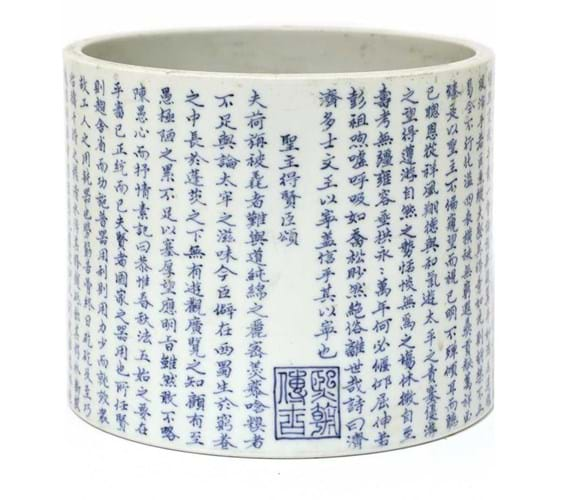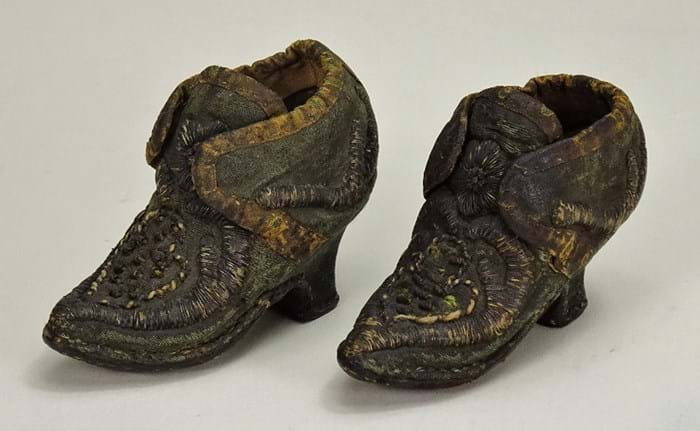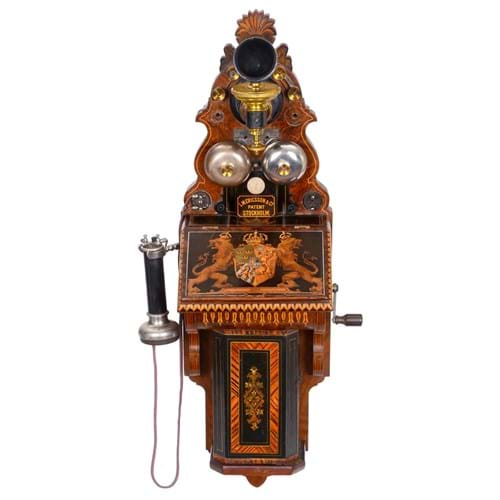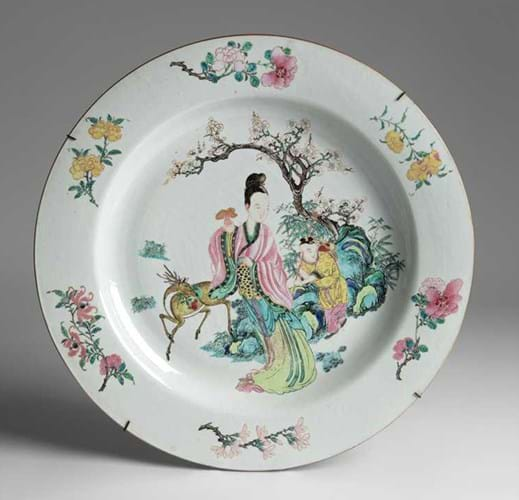
1. Kangxi blue and white brush pot – £125,000
This Kangxi (1662-1722) period blue and white brush pot, above, offered for sale at Sworders in Stansted Mountfitchet on November 5, is finely inscribed with the text of Shengzhu de Xianchen Song (Ode to the Finding of Virtuous Officials by the Divine Ruler).
The poem, written by the Western Han poet Wang Bao (90-51 BC) for the Xuan Emperor (91-48 BC), instructs a sage ruler on the need to appoint able ministers.
Brush pots and vases of this type (similar vessels are known decorated with Ode to the Red Cliff by Song dynasty poet Su Shi) speak of a key moment in the history of the Manchu Qing dynasty that – half a century after the overthrow of the Ming in 1644 – were still yet to win the loyalty of the Han intellectual elite. Kangxi made efforts to cultivate their support by modelling his rule on that of a traditional Confucian monarch and promoted classical texts like this to gain legitimisation for his reign. The use of a copper-red seal reading Xi Chao Chuan Gu (literally ‘transmitting antiquity from the court of Kangxi’) adds to the impression that the Qing emperor was part of a continuous line reaching far into Chinese history.
The piece came for sale in good condition from a private collection in Suffolk with a guide of £2000-3000 – a modest estimate given that a very similar piece (referenced in the catalogue description) sold at Christie’s in November 2019 for £150,000. Similar enthusiasm greeted Sworders’ example that made £125,000, the top price of the firm’s Asian Art sale.
2. Doll’s shoes from 1700 – £8200
The sale at toy specialists C&T Auctions in Kenardington, Kent on November 3 included this very rare pair of doll’s shoes dated to around 1700. Fashioned in kid leather, green and yellow silk and metallic thread, they measure just 6cm across.
In the early 18th century, fashion dolls (usually made of wood and gesso) were less playthings and more mannequins. The Victoria & Albert Museum owns a similar pair of shoes made for a doll, known as Lady Clapham, that is thought to have belonged to the Cockerell family, descendants of the diarist Samuel Pepys (1633-1703).
Lady Clapham, wearing the outfit of a wealthy woman in the 1690s, shows relatively little sign of use which suggests that she was admired by adults rather than played with by children.
C&T believed its pair were the first of this date to be offered for sale at auction. Estimated at £3000-4000, they sold at £8200.
3. Ericsson telephone made for royalty – €60,000
Guaranteed to attract attention at science and technical antiques specialist Auction Team Breker in Cologne on November 6 was this remarkable Ericsson telephone. The walnut case and marquetry-inlaid case gives a clue to its importance: the crest is the coat of arms of the Swedish-Norwegian royal family.
Telephone technology had come to Norway with the first public demonstration of the Bell telephone in 1877 followed in 1888 by the installation of one-to-one phones between residents of the capital city of Oslo. By 1880 it became possible to place calls to a number of persons connected to an exchange with Norway soon to become among the most telephone-dense countries in the world (Sweden had most of all).
Lars Magnus Ericsson's company had been founded in 1876 to supply phones and switchboards to Scandinavia’s first telecommunications projects. This deluxe production was installed at the Königliche Schloss in Oslo (then home of the Bernadotte king Oscar II) around 1880. It has a number of early features (the helical microphone has a screw for simple and accurate regulation of the contact pressure) but it is the case that makes it what Breker called “one of a kind”. Offered in “very good original condition” it was estimated at €15,000-25,000 but went on to sell at €60,000 (plus buyer’s premium).
The Königliche Schloss is still the official residence of the Norwegian monarch. King Harald V, now 83 years old, raised a laugh at this year’s annual Parliament dinner (held at the palace on October 28) when he revealed he had just bought his first ever mobile. Until owning a cell phone became essential the pandemic, he had been quite content with a landline.
4. Yongzheng 'Magu' dish – £32,000
The scene on this 19in (43cm) Yongzheng famille rose dish depicts the Daoist immortal Magu on her way to celebrate the famous peach banquet of the Queen Mother of the West, Xi Wang Mu, who rules over the garden of the peaches of longevity.
The lingzhi fungus she holds in her hand and the stag with a peach in its mouth are also symbol of longevity while the blossoming prunus tree represents youth and new life.
However, equally arresting is a wheel engraved inventory mark for the collection of Augustus the Strong (1670-1733). His passion for porcelain bordered on an obsession: he owned more than 29,000 pieces of Chinese and Japanese porcelain when he died in 1733.
This plate can be dated with some accuracy since the inventory books at Dresden reveal that dishes of this kind were acquired in 1727.
A number of similar plates and dishes with the same design and inventory number have appeared on the market. This example has been in a Hampshire family collection for over four generations. At Lyon & Turnbull’s sale of Fine Asian & Islamic Works of Art on November 5 it was expected to bring £5000-8000 but sold at £32,000.
5. ‘Golfing’ Mauchlinware box – £3200
The game of golf (originating on the eastern coast of Scotland) and mauchlineware (the name given to a family of wooden souvenirs made in south west Scotland over a period of a century) would seem ideal bedfellows.
However, very few pieces of mauchline depicting the ‘national’ game appear to have survived. This snuff box offered for sale at Gorringe’s in Lewes on November 8 has everything going for it, save perhaps its condition. Measuring 5in (12cm) across, it is decorated to five sides with detailed images of figures playing links golf variously titled The First Hole, Putting, Using the Heavy Iron, Taking a View of the Office and After the First Round. The use of penwork decoration (rather than the later transfer printing), the stye of dress and details such as the blacksmith made irons date it to the second quarter of the 19th century.
To the interior is the stamp C. Stiven for the maker Charles Stiven of Laurencekirk. Steven’s sons continued the business, their ‘scotch boxes’ and tartanware among the exhibits at the 1851 Great Exhibition.
Golfing antiques are famously ‘not what they were’ but this rare box was avidly contested, despite some small splits to the joints and a ‘smiling’ lid.
Estimated at £80-120, it took £3200.









